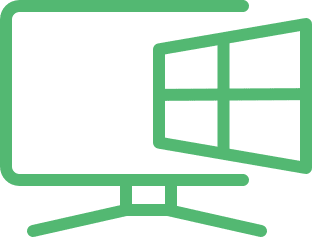Assembly of a jet engine
– VR training application
from predefined parts, guiding him through the successive stages of work.
![]()
Challenge
Creating an easy-to-implement
training application
- Option to customize the system for any devices and assembly processes
- Creating the possibility of using high detail and a large amount of details in 3D models
- Stimulating muscle memory by encouraging physical movement
- Creation of a tutorial mode for learning and an exam mode for passing the training
VR training applications are an effective tool used in assembly training and safety training.
![]()
Solution
Guiding employees through the process
of assembling a complex engine
- The user is guided step by step to assemble the parts in the correct sequence.
- In case of wrong assembly order, an error message is returned.
- The imprecise placement of the part prevents it from sticking to the structure.
Faithful reproduction of engine elements helps to obtain the immersion effect necessary in training, supporting the memorization of information and effective assimilation of the presented material. The application facilitates the transfer of virtual experiences to real tasks.
- Selection of the product or component that we want to develop
Effective training in virtual reality may take about 20-30 minutes. During this time, the trainee can focus effectively on the process.
- We define training assumptions, parts and assembly sequence
We delve into the individual parts that will be modeled as well as the assembly process. This is a good time to talk to the people working with the product who will show you the technical and manual nuances.
- Propotype of major interactions
We program a simple application with simplified graphics, the purpose of which is to test the interaction, i.e. the way in which we carry out assembly. We discuss the effects with technicians to meet the training assumptions.
- User experience (UX) of the application
We plan the structure of the entire application, i.e. the user experience, starting from the context of use, through putting on the goggles, choosing the experience mode, the appropriate training application, to the end of the training and taking the headset off.
- Part modeling
The making of models can be done in different ways. CAD files containing the outer (visible) layer of the part are often sufficient. On their basis, we make 3D models for training.
- Application programming
We write the code in the Unity 3D environment and test it directly on the target devices – HTC Vive or mobile headsets.
- User tests
We test each iteration of the application on the target group, consulting training assumptions with technical persons on the client’s side.
- Collecting feedback
Usually, the first training application is a pilot and verifies the validity of training and design assumptions. Based on the client’s experience with the application and our observations, we prepare a recommendation for the purposes of further training.
Technology


Effects
- Success # 1 | An application tailored for your needs
Using your guidelines and our know-how, we are able to port our training system to your devices. The application could use not only your infrastructure but also be tailored to the specifics of the devices the training will involve.
- Success # 2 | Low-cost training
Medium and large enterprises with relatively high employee turnover will certainly benefit from quick and convenient training “on the spot”. An additional advantage of VR training is the elimination of the need to conduct training on equipment taken out of use during the course and the risk of damage to equipment or loss of health.
